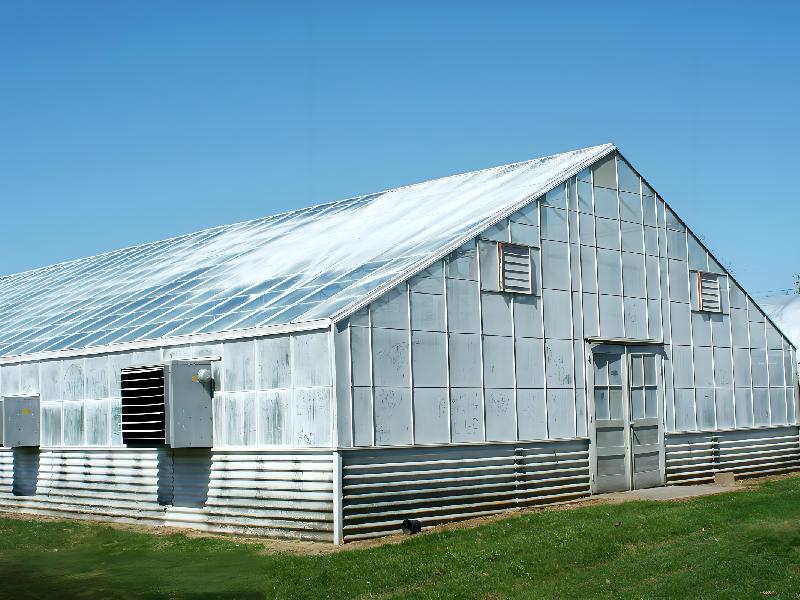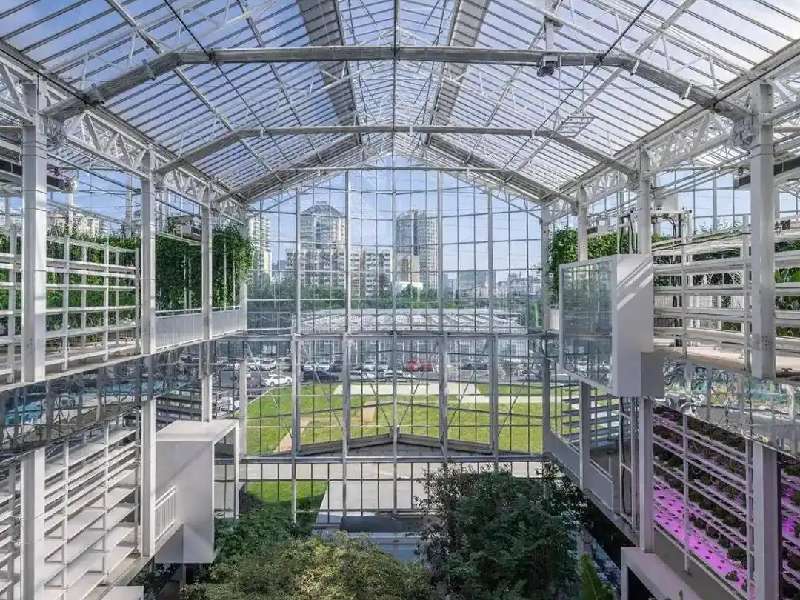Greenhouses have always been key in boosting crop yields and quality in agriculture. Traditional greenhouses, however, have their limits, like relying too much on climate control and not using resources efficiently. This has slowed their progress.
Don’t Miss: 18 Different Types Of Commercial Greenhouses
Now, with tech getting better, smart greenhouses have come up. They use high-tech methods for a more effective and sustainable way to grow crops. Then, what’s great about smart greenhouses? In this post, we’ll dive into their basic idea and the top 10 benefits of using them for farming.
What Is Smart Greenhouse?
A smart greenhouse combines the latest tech in managing greenhouses. It uses automation and cutting-edge systems to make sure plants grow well. In these greenhouses, sensors track key things like temperature, humidity, light, CO2 levels, soil moisture, and plant nutrients. This ensures crops always grow in the best conditions.
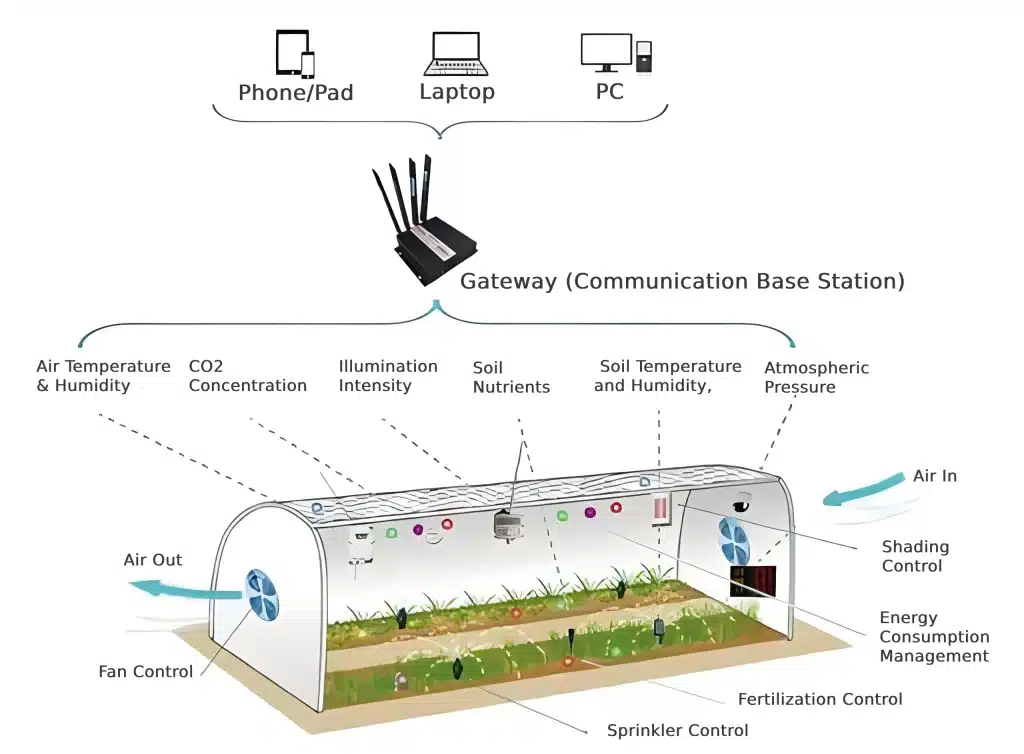
Plus, smart greenhouses can adjust these factors automatically. They use advanced lights, like LED grow lights with adjustable spectrums, to copy natural light from different seasons. They can also adjust CO2 levels to match what plants need. Usually, these greenhouses have automatic watering and climate systems. This ensures water and temperature are just right, reducing the work you need to do.
10 Advantages of A Smart Greenhouse
After getting the basic concept of smart greenhouses, you might wonder about their real-world perks. Here’s a closer look at ten big wins when using smart greenhouses over traditional farming.
1. Steady Growing Environment
Smart greenhouses let you control key factors like temperature, humidity, light, and CO2 levels inside. This creates a super steady environment, perfect for crops. Imagine not worrying about weather changes anymore. In your smart greenhouse, nature’s whims don’t get in the way. You can also tweak the settings to fit what your crops need.
2. Less Weather and Season Issues
In smart greenhouses, outside weather and seasonal changes don’t mess with your farming. These greenhouses give you full control over the indoor climate, making it independent of the outside world. Whether it’s a cold winter or a hot summer, your crops get the best conditions to grow.
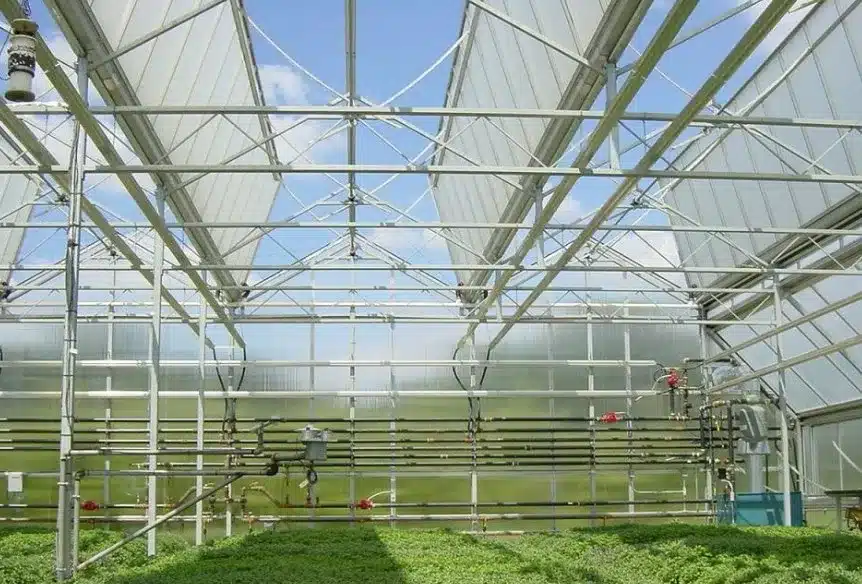
For example, in winter, you can keep the greenhouse warm, just right for crops. In summer, smart shading and ventilation keep things cool. This precise control increases crops’ survival rate and improves their growth cycle, yield, and quality.
3. Spot-On Water and Fertilizer Use
Getting water and fertilizer right is key to good crop growth. Young plants might need water more often but in smaller amounts. Reducing water helps concentrate nutrients for fruit or seed maturation as they grow.
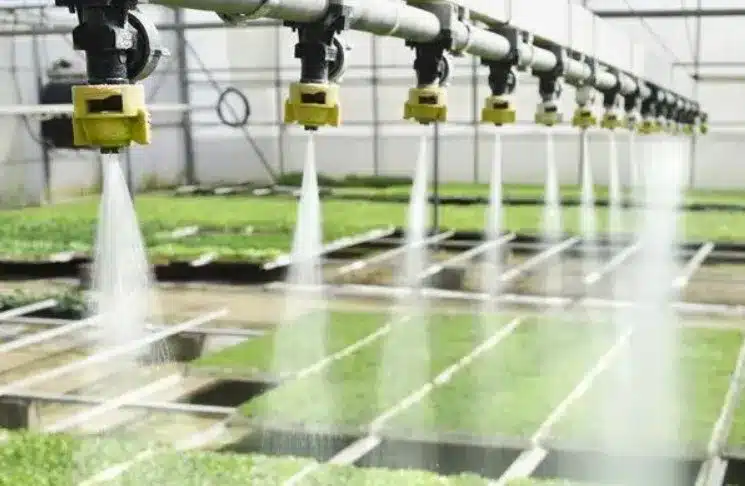
Smart greenhouses can auto-adjust fertilizer types and amounts based on crops’ needs at different growth stages. This avoids too much fertilizer, which can hurt soil and waste nutrients while ensuring crops get enough food. This careful management leads to healthier, more regular growth and better yields.
4. Automated Care
Smart greenhouses have systems that handle temperature, humidity, and CO2 levels without needing you to do anything. This cuts down your workload and overall costs. Even when you’re not there, you can control everything remotely.
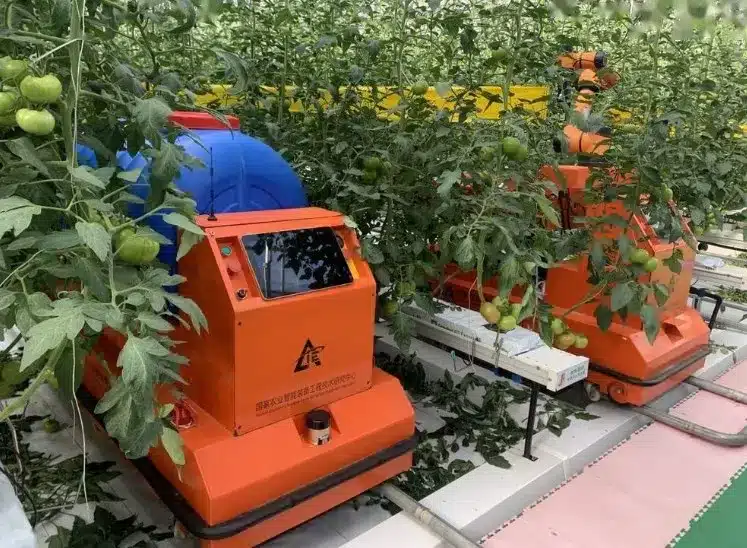
The system sends real-time data to your phone or computer, letting you watch crops from anywhere. Do we need to change the temperature or water more? With a few clicks on your device, the remote system takes care of it. You’ll see healthier crops and better yields and quality, with less risk of human error.
5. Fewer Pests and Diseases
Smart greenhouses can use advanced methods to lower the risk of pests and diseases. For instance, precise monitoring gear can warn you of issues before they happen. If conditions start favoring pests or diseases, the system alerts you. This lets you act fast, like changing the environment or using natural controls. This forward-thinking approach reduces chemical pesticides, keeping crops and consumers safer and improving produce quality.
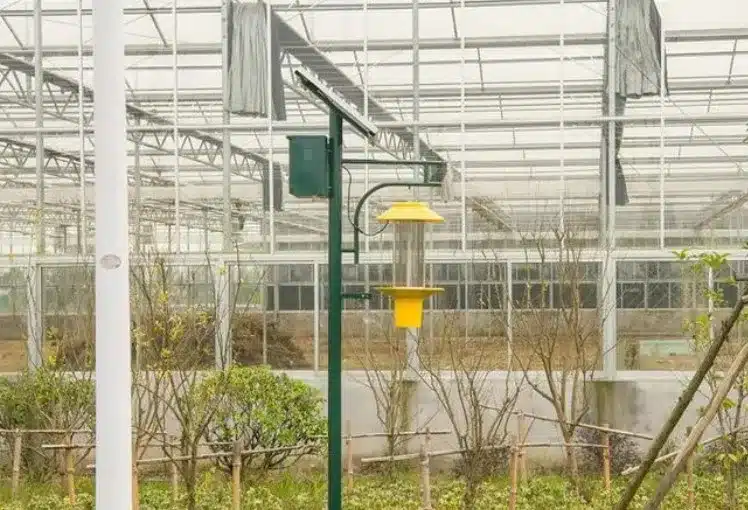
Also, the automated system in smart greenhouses can adjust airflow and humidity based on crop stages and external changes. This lowers the chance for harmful bugs and germs to thrive. Your greenhouse becomes a healthy, green space, protecting crops from pests and diseases.
6. Sustainable Growth
Smart greenhouses let you reuse water and energy, leading to sustainable farming. For example, rainwater collection systems help use natural resources to the fullest, cutting down on groundwater and city water use. Solar panels can turn sunlight into electricity for greenhouse heating, lighting, and other needs.
Also, these greenhouses use top-notch soil management and fertilizer recycling to ensure soil nutrients are used well and not wasted. These green practices not only make farming more efficient but also help the environment and keep ecosystems balanced.
7. Boosting Farming Efficiency
Smart greenhouses use layers and movable planting to hugely increase how much you can grow and how efficiently you can do it. Vertical farming lets you grow crops on several levels, making the most of your space. This means more crops in the same area, leading to bigger harvests.
Besides, movable planting systems let you change the growing space and light based on the crops’ needs at different times. This customized growing environment doesn’t just make farming more efficient; it also ensures crops grow in the best conditions. This way, your farming is more effective and flexible, meeting various market needs.
8. Quality Produce
Smart greenhouses maintain the quality of your crops by controlling the indoor environment. You can manage light, temperature, and humidity perfectly, ensuring even and regular growth. This careful control boosts crop yield and improves quality, like the taste, nutritional value, and looks.
In smart greenhouses, advanced monitoring helps you do strict quality checks. You can watch how crops grow in real-time, ensuring every batch is top-notch. Data analysis tools help you spot and fix growing conditions, ensuring ongoing quality improvement. This trust in quality wins over customers and makes your products more competitive in the market.
9. Saving Land
Smart greenhouses use vertical planting and hydroponics to save the land needed for farming. Vertical planting lets you grow crops on stacked racks, which means more yield per area. This way, even in small spaces, you can farm efficiently.
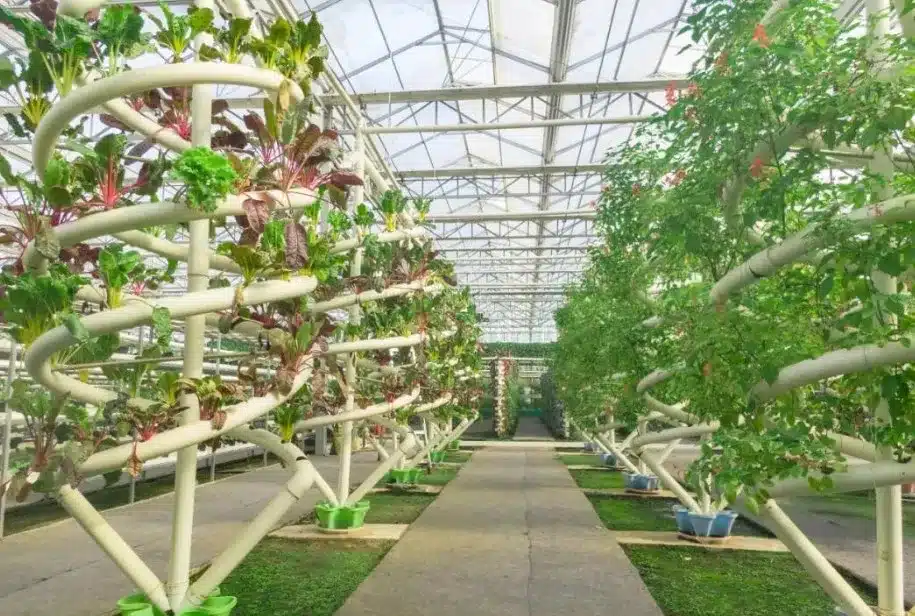
Hydroponics takes it further by letting crops grow in water without soil. This saves land and reduces the risks of land damage and pollution. These methods make smart greenhouses ideal for cities and places with little land, offering new ways to farm in dense areas.
10. Better Economy
Smart greenhouses improve crop yield and quality and boost profits by cutting down on production and management costs. Automation and remote monitoring mean less need for manual work, making the whole process more efficient. With these technologies, you can monitor conditions and crop growth, adjusting on the fly to ensure the best growing environment. This raises yield and quality.
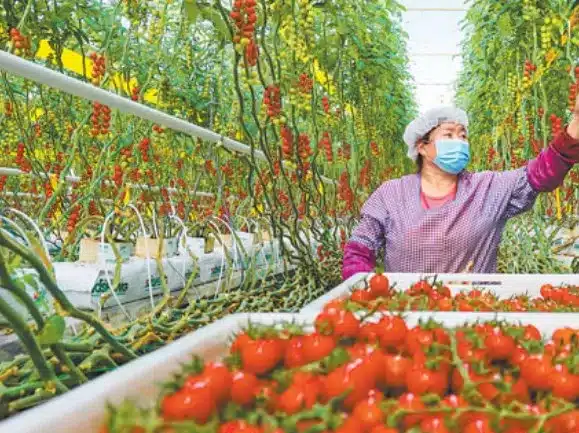
Also, smart greenhouses can quickly change planting plans to match market demands, letting you adapt to market shifts and maximize profits. This better flexibility and efficiency make smart greenhouses a profitable and smart farming choice.
Challenges and Solutions
Entering the smart commercial greenhouse field has its challenges.
1. Cost of Starting and Running.
The main challenge is the high cost of starting and the ongoing costs of running. Smart greenhouses need advanced tech and equipment, which costs a lot. Although they save on labor, they raise energy costs, especially for automated systems and climate control.
To deal with this, consider government grants and loans supporting innovative and green farming. Working with equipment suppliers might get you better deals or payment plans. Investing in energy-saving tech like solar panels can lower long-term costs, balancing the economy and environment.
2. Running the Greenhouse Systems.
You’ll need tech skills to manage smart greenhouses. These complex systems need regular care and updates. Training in system use is crucial. It helps you understand how the greenhouse works, find and fix issues, and keep things running smoothly.
Using these methods, you can tackle the challenges of smart greenhouse farming, making your project both practical and competitive.
Conclusion
Smart greenhouse tech offers an efficient, green way to farm, especially in resource-poor, harsh climates like the Middle East and Africa. Here, smart greenhouses beat natural limits and harsh weather, giving crops an ideal place to grow. This means they can ensure stable crops even in dry or hot conditions, reducing reliance on traditional farming.
Smart greenhouses don’t just raise efficiency and quality; they also use water and energy better and cut labor costs. This is big for food security and sustainable farming, especially in areas with tough climates. As tech improves and costs drop, smart greenhouses will play a bigger role in global farming, especially in helping areas with few resources and tough climates.

